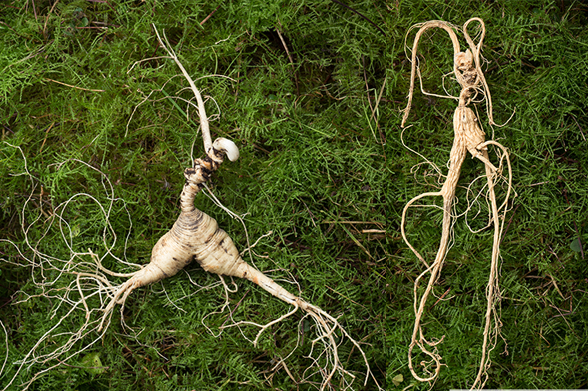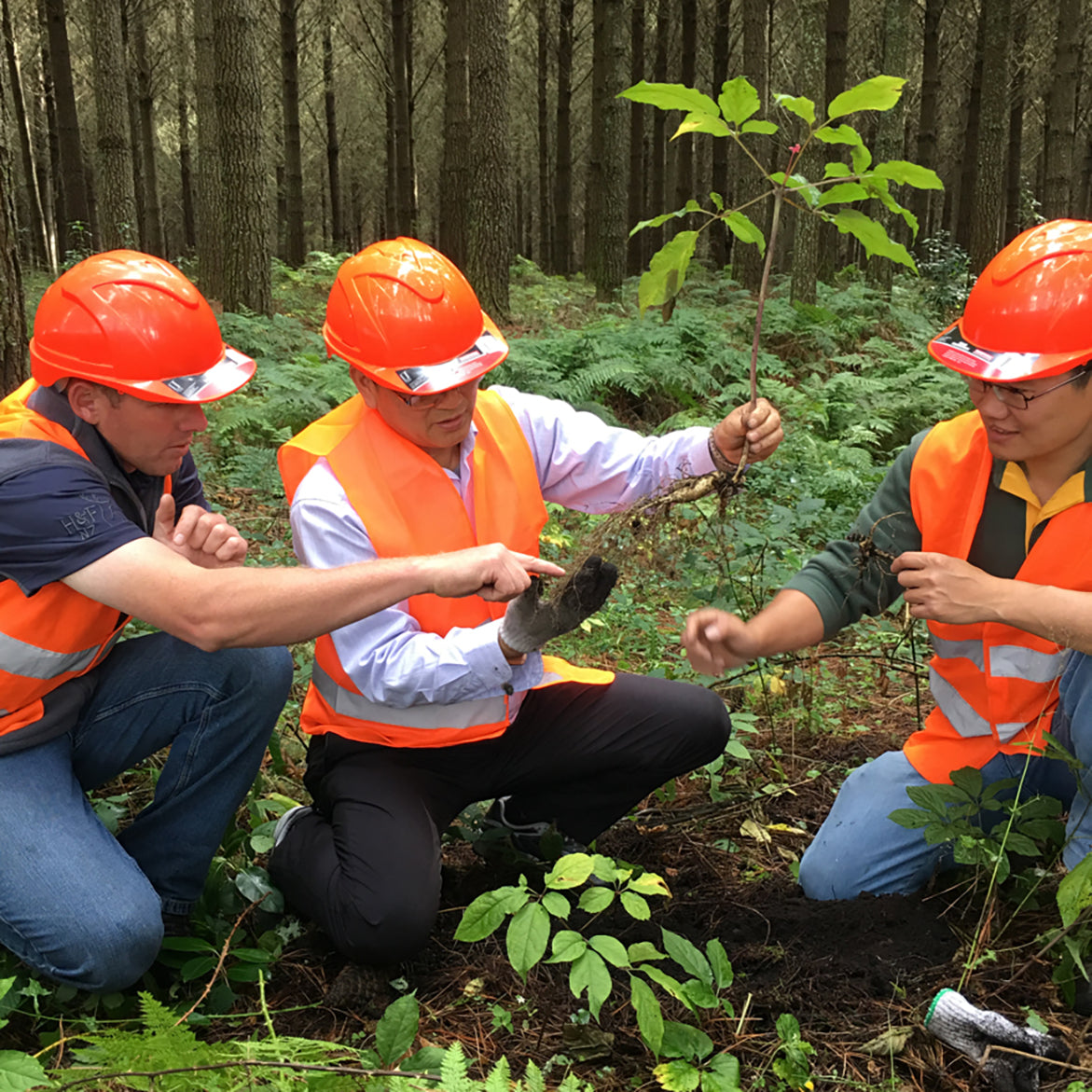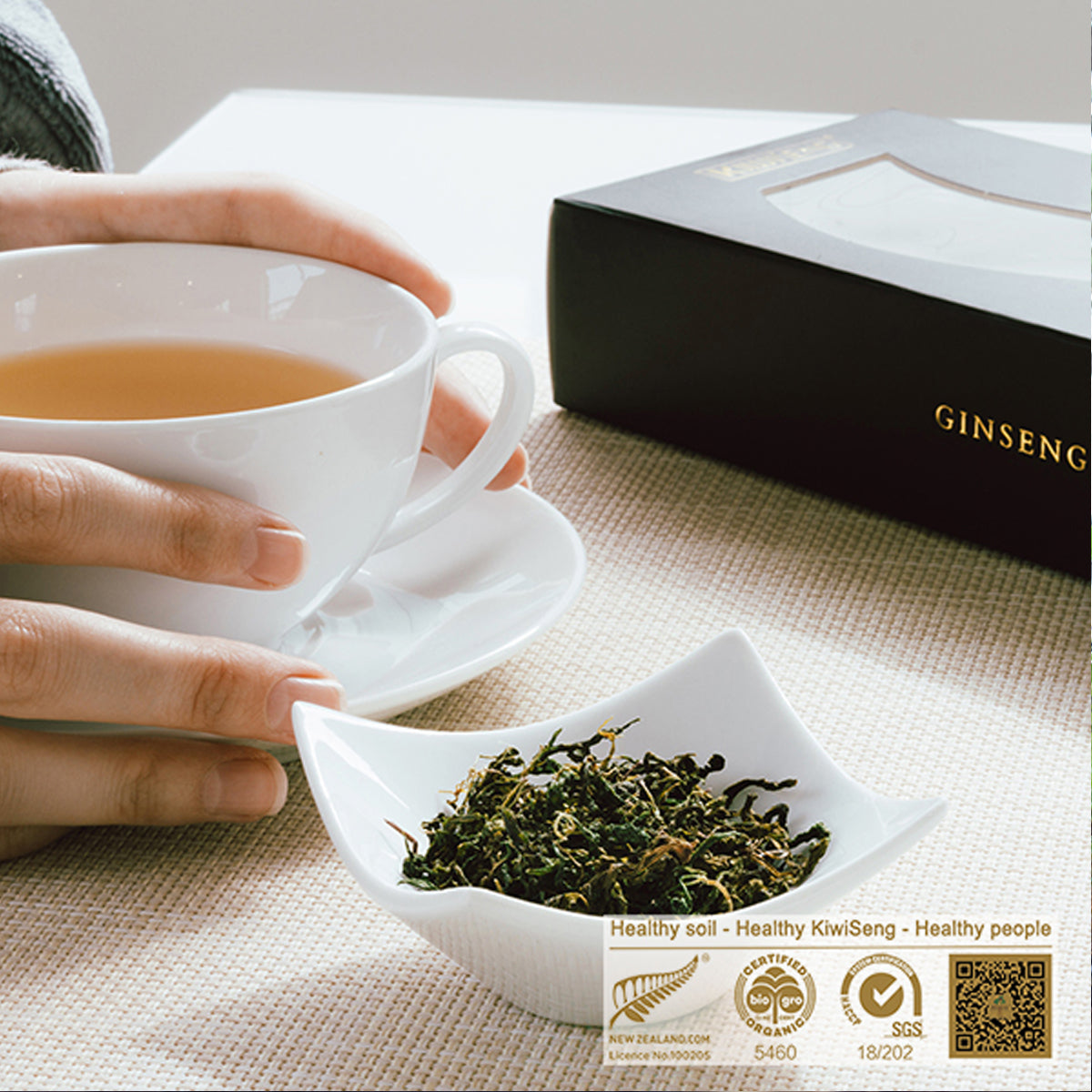
NZ-grown Asian and American Ginseng Compared

Asian ginseng (Panax ginseng) and American ginseng (Panax quinquefolium L.) are the two most important ginseng species for their medicinal properties.
Asian ginseng is considered to be invigorating and stimulating and American ginseng is considered to be more relaxing and sedative. Asian ginseng is known to increase “yang” energy while American ginseng increases the “yin” energy. These functional differences may be due to differences in the bioactive ginsenosides between these two species.
KiwiSeng has been growing both Asian ginseng and American ginseng under radiata pine forests in the Central North Island of New Zealand.
In a study published in 2020, a team of scientists at Massey University compared the ginsenoside profiles of different parts of the ginseng plant for both of these species. Eight year old plants grown by KiwiSeng were harvested and analysed for their ginsenoside number and concentration.
The number of ginsenosides and the total contents of ginsenosides in different parts between two ginseng species are in the diagram below.

Comparison of ginsenoside components between New Zealand-grown Asian ginseng (colourless background) and New Zealand-grown American ginseng (coloured background) in leaf (green), stem (blue), rhizome (red), fine root (brown), and main root (yellow). The numbers in parentheses refer to the number of ginsenosides identified by qualitative analysis, and the other numbers refer to the total content of ginsenosides (mg/g).
The main points to note are:
Both New Zealand-grown Asian and American ginseng had high numbers of detectable ginsenosides and high concentrations of ginsenosides.
The ginsenoside composition and content of the two kinds of ginseng are very different in the aboveground parts (leaf and stem), and in the underground parts (main root, fine root, and rhizome). The stem had much lower concentrations of ginsenosides compared with other parts of the plant.
The underground parts of the plant have a similar number of identified ginsenosides to the leaves and slightly more different ginsenosides than the stem. For both species, the rhizome and fine roots had the highest concentration of ginsenosides compared with other parts of the plant. Asian ginseng had a higher concentration of ginsenosides in the rhizome and fine roots than American ginseng.
Each of the ginseng species had ginsenosides that were unique to each species. In general, around half of the identified ginsenosides were common to both species while around a quarter were unique to Asian ginseng and a quarter of the ginsenosides were unique to American ginseng. These differences may account for the different health and medicinal properties of ginseng. Both Asian and American ginseng grow well in forests in New Zealand and have functional properties.
This original research was published online at https://www.mdpi.com/2218-273X/10/3/372




Leave a comment
This site is protected by hCaptcha and the hCaptcha Privacy Policy and Terms of Service apply.